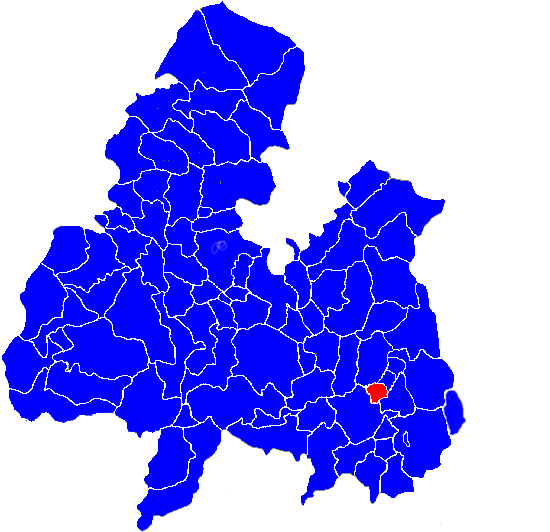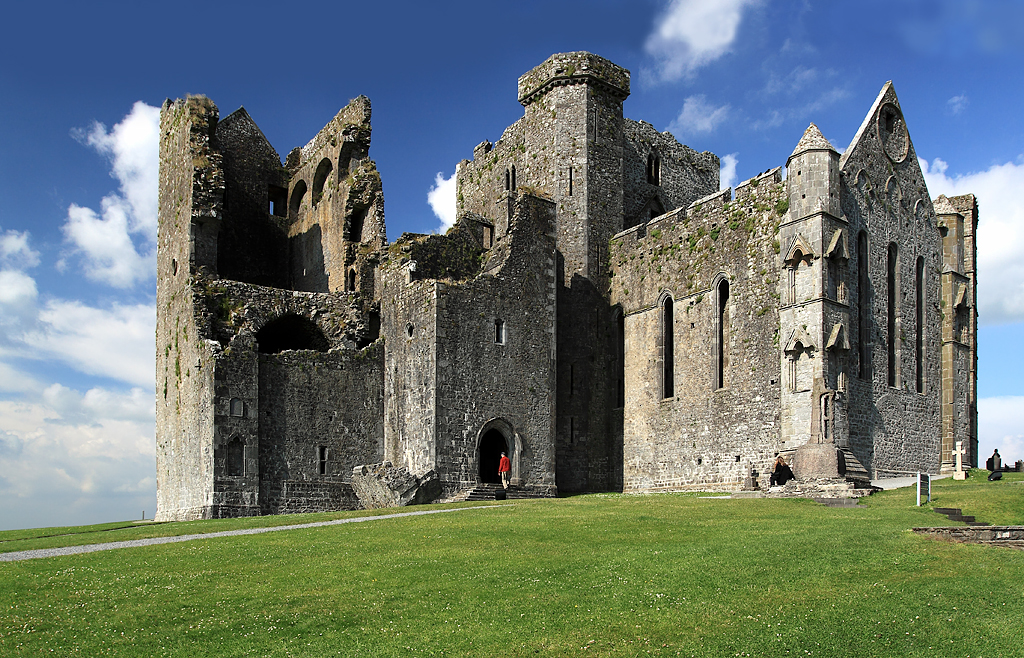|
Shyane
Shyane ( ga, An Sián meaning a Fairy fort, fairy mound) is a Civil parishes in Ireland, civil parish in County Tipperary, Republic of Ireland, Ireland. It is one of 21 civil parishes in the historical Barony (Ireland), barony of Eliogarty. It is divided into three townlands: Clobanna (containing a little over 243 acres), Rossestown (a little over 587 acres) and Coolgarrane (a little over 77 acres). Church of Ireland parish Like all civil parishes, this civil parish is derived from, and co-extensive with a pre-existing Church of Ireland parish of the same name. (However, the Ecclesiastical Annals for the Church of Ireland diocese of Cashel say that the parish was sometimes called Templeshyane). The first Ordnance Survey map of the area shows a graveyard and the ruins of Templeshyane church in the north-eastern corner of Clobanna townland, with one parcel of glebe land surrounding them and another parcel of glebe land in the southern part of the townland. An article in volum ... [...More Info...] [...Related Items...] OR: [Wikipedia] [Google] [Baidu] |
Eliogarty
Eliogarty (Irish: ''Éile Uí Fhógarta'') is a barony in County Tipperary, Ireland. This geographical unit of land is one of 12 baronies in County Tipperary. Its chief town is Thurles. The barony lies between Ikerrin to the north (whose chief town is Roscrea), Kilnamanagh Upper to the west (whose chief town is Borrisoleigh), Middle Third to the south (whose chief town is Cashel) and County Kilkenny to the east. It is currently administered by Tipperary County Council. Legal context Baronies were created after the Norman invasion of Ireland as divisions of counties and were used the administration of justice and the raising of revenue. While baronies continue to be officially defined units, they have been administratively obsolete since 1898. However, they continue to be used in land registration and in specification, such as in planning permissions. In many cases, a barony corresponds to an earlier Gaelic túath which had submitted to the Crown. This is probably true in the ca ... [...More Info...] [...Related Items...] OR: [Wikipedia] [Google] [Baidu] |
Fairy Fort
Fairy forts (also known as ''lios'' or ''raths'' from the Irish, referring to an earthen mound) are the remains of stone circles, ringforts, hillforts, or other circular prehistoric dwellings in Ireland. From (possibly) the late Iron Age to early Christian times, the island's occupants built circular structures with earth banks or ditches. These were sometimes topped with wooden palisades and wooden framed buildings. As the dwellings were not durable, in many cases only vague circular marks remain in the landscape. The remains of these structures, in conjunction with the vegetation around them, are associated with local traditions and folklore, perhaps involving fairies or other supposed supernatural entities, who would "defend" the structures from destruction by builders or farmers. As of 1991 there were between thirty and forty thousand identifiable fairy forts in Ireland's countryside, the oldest of them possibly dating back as early as 600 BCE. Interpretation Tradition ... [...More Info...] [...Related Items...] OR: [Wikipedia] [Google] [Baidu] |
Civil Parishes In Ireland
Civil parishes () are units of territory in the island of Ireland that have their origins in old Gaelic territorial divisions. They were adopted by the Anglo-Norman Lordship of Ireland and then by the Elizabethan Kingdom of Ireland, and were formalised as land divisions at the time of the Plantations of Ireland. They no longer correspond to the boundaries of Roman Catholic or Church of Ireland parishes, which are generally larger. Their use as administrative units was gradually replaced by Poor_law_union#Ireland, Poor Law Divisions in the 19th century, although they were not formally abolished. Today they are still sometimes used for legal purposes, such as to locate property in deeds of property registered between 1833 and 1946. Origins The Irish parish was based on the Gaelic territorial unit called a ''túath'' or ''Trícha cét''. Following the Norman invasion of Ireland, the Anglo-Normans, Anglo-Norman barons retained the ''tuath'', later renamed a parish or manor, as a un ... [...More Info...] [...Related Items...] OR: [Wikipedia] [Google] [Baidu] |
County Tipperary
County Tipperary ( ga, Contae Thiobraid Árann) is a county in Ireland. It is in the province of Munster and the Southern Region. The county is named after the town of Tipperary, and was established in the early 13th century, shortly after the Norman invasion of Ireland. It is Ireland's largest inland county and shares a border with 8 counties, more than any other. The population of the county was 159,553 at the 2016 census. The largest towns are Clonmel, Nenagh and Thurles. Tipperary County Council is the local authority for the county. In 1838, County Tipperary was divided into two ridings, North and South. From 1899 until 2014, they had their own county councils. They were unified under the Local Government Reform Act 2014, which came into effect following the 2014 local elections on 3 June 2014. Geography Tipperary is the sixth-largest of the 32 counties by area and the 12th largest by population. It is the third-largest of Munster's 6 counties by both size and popul ... [...More Info...] [...Related Items...] OR: [Wikipedia] [Google] [Baidu] |
Republic Of Ireland
Ireland ( ga, Éire ), also known as the Republic of Ireland (), is a country in north-western Europe consisting of 26 of the 32 counties of the island of Ireland. The capital and largest city is Dublin, on the eastern side of the island. Around 2.1 million of the country's population of 5.13 million people resides in the Greater Dublin Area. The sovereign state shares its only land border with Northern Ireland, which is part of the United Kingdom. It is otherwise surrounded by the Atlantic Ocean, with the Celtic Sea to the south, St George's Channel to the south-east, and the Irish Sea to the east. It is a unitary, parliamentary republic. The legislature, the , consists of a lower house, ; an upper house, ; and an elected President () who serves as the largely ceremonial head of state, but with some important powers and duties. The head of government is the (Prime Minister, literally 'Chief', a title not used in English), who is elected by the Dáil and appointed by ... [...More Info...] [...Related Items...] OR: [Wikipedia] [Google] [Baidu] |
Barony (Ireland)
In Ireland, a barony ( ga, barúntacht, plural ) is a historical subdivision of a county, analogous to the hundreds into which the counties of England were divided. Baronies were created during the Tudor reconquest of Ireland, replacing the earlier cantreds formed after the original Norman invasion.Mac Cotter 2005, pp.327–330 Some early baronies were later subdivided into half baronies with the same standing as full baronies. Baronies were mainly cadastral rather than administrative units. They acquired modest local taxation and spending functions in the 19th century before being superseded by the Local Government (Ireland) Act 1898. Subsequent adjustments of county boundaries mean that some baronies now straddle two counties. The final catalogue of baronies numbered 331, with an average area of ; therefore, each county was divided, on average, into 10 or 11 baronies. Creation The island of Ireland was "shired" into counties in two distinct periods: the east and south duri ... [...More Info...] [...Related Items...] OR: [Wikipedia] [Google] [Baidu] |
Townland
A townland ( ga, baile fearainn; Ulster-Scots: ''toonlann'') is a small geographical division of land, historically and currently used in Ireland and in the Western Isles in Scotland, typically covering . The townland system is of Gaelic origin, pre-dating the Norman invasion, and most have names of Irish origin. However, some townland names and boundaries come from Norman manors, plantation divisions, or later creations of the Ordnance Survey.Connolly, S. J., ''The Oxford Companion to Irish History, page 577. Oxford University Press, 2002. ''Maxwell, Ian, ''How to Trace Your Irish Ancestors'', page 16. howtobooks, 2009. The total number of inhabited townlands in Ireland was 60,679 in 1911. The total number recognised by the Irish Place Names database as of 2014 was 61,098, including uninhabited townlands, mainly small islands. Background In Ireland a townland is generally the smallest administrative division of land, though a few large townlands are further divided into h ... [...More Info...] [...Related Items...] OR: [Wikipedia] [Google] [Baidu] |
Church Of Ireland
The Church of Ireland ( ga, Eaglais na hÉireann, ; sco, label= Ulster-Scots, Kirk o Airlann, ) is a Christian church in Ireland and an autonomous province of the Anglican Communion. It is organised on an all-Ireland basis and is the second largest Christian church on the island after the Roman Catholic Church. Like other Anglican churches, it has retained elements of pre-Reformation practice, notably its episcopal polity, while rejecting the primacy of the Pope. In theological and liturgical matters, it incorporates many principles of the Reformation, particularly those of the English Reformation, but self-identifies as being both Reformed and Catholic, in that it sees itself as the inheritor of a continuous tradition going back to the founding of Christianity in Ireland. As with other members of the global Anglican communion, individual parishes accommodate different approaches to the level of ritual and formality, variously referred to as High and Low Church. Overvie ... [...More Info...] [...Related Items...] OR: [Wikipedia] [Google] [Baidu] |
Glebe
Glebe (; also known as church furlong, rectory manor or parson's close(s))McGurk 1970, p. 17 is an area of land within an ecclesiastical parish used to support a parish priest. The land may be owned by the church, or its profits may be reserved to the church. Medieval origins In the Roman Catholic, Anglican and Presbyterian traditions, a glebe is land belonging to a benefice and so by default to its incumbent. In other words, "glebe is land (in addition to or including the parsonage house/rectory and grounds) which was assigned to support the priest".Coredon 2007, p. 140 The word ''glebe'' itself comes from Middle English, from the Old French (originally from la, gleba or , "clod, land, soil"). Glebe land can include strips in the open-field system or portions grouped together into a compact plot of land. In early times, tithes provided the main means of support for the parish clergy, but glebe land was either granted by any lord of the manor of the church's parish (sometime ... [...More Info...] [...Related Items...] OR: [Wikipedia] [Google] [Baidu] |
Dublin University Magazine
The ''Dublin University Magazine'' was an independent literary cultural and political magazine published in Dublin from 1833 to 1882. It started out as a magazine of political commentary but increasingly became devoted to literature. The magazine was published under the title ''The Dublin University Magazine: A Literary and Political Journal'' from January 1833 to December 1877 (volumes 1 to 90), then under the title ''The University Magazine: A Literary and Philosophic Review'' with a new series from 1878 to 1880 (volumes 1 to 5), and then under the title ''The University Magazine'' with a quarterly series from 1880 to 1882. Early days The year 1832 had been one of political and ecumenical upheaval: disturbances in Britain led to the Reform Act of that year, the Tithe War was raging in Ireland and the new Whig government was gaining influential supporters in Trinity College Dublin. A number of young men associated with the College, including Isaac Butt, John Anster (translator o ... [...More Info...] [...Related Items...] OR: [Wikipedia] [Google] [Baidu] |








